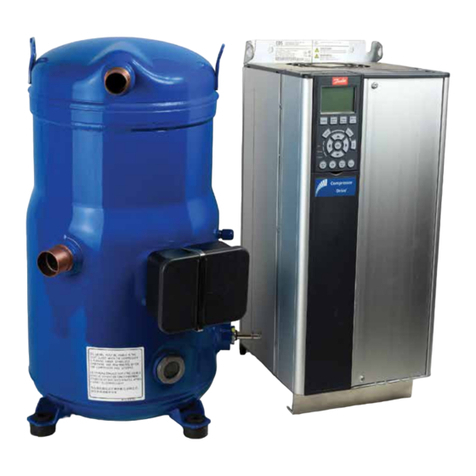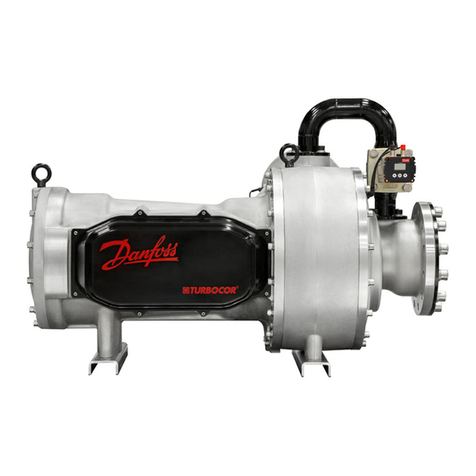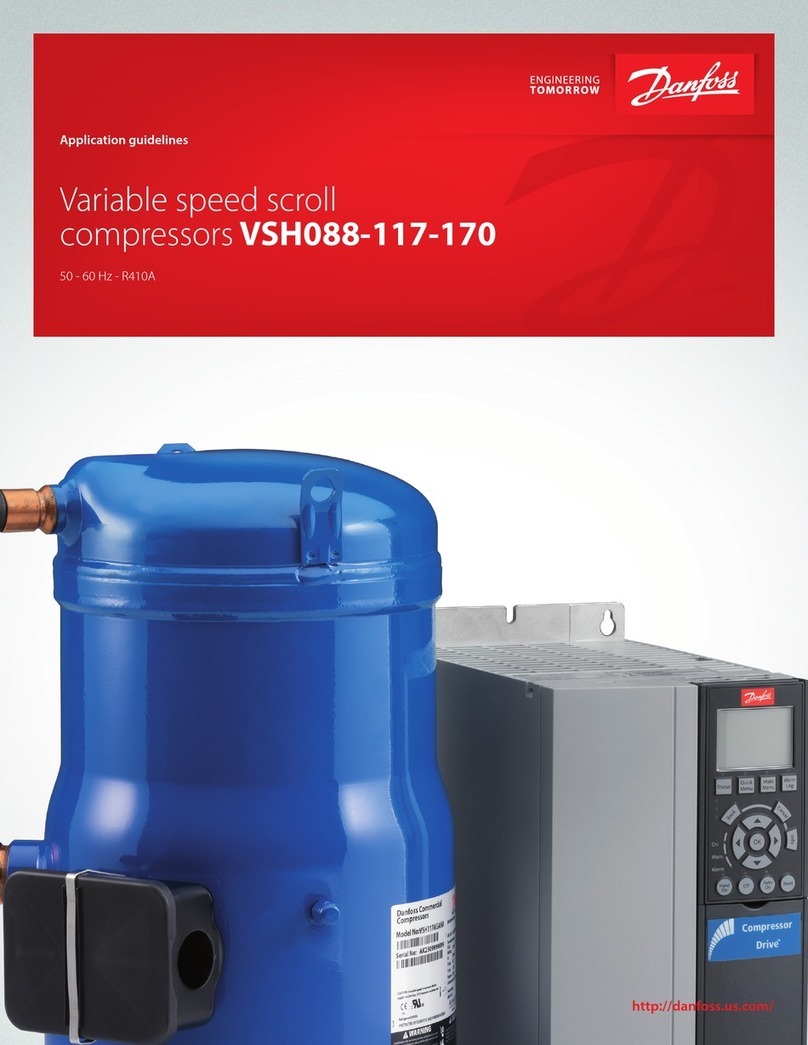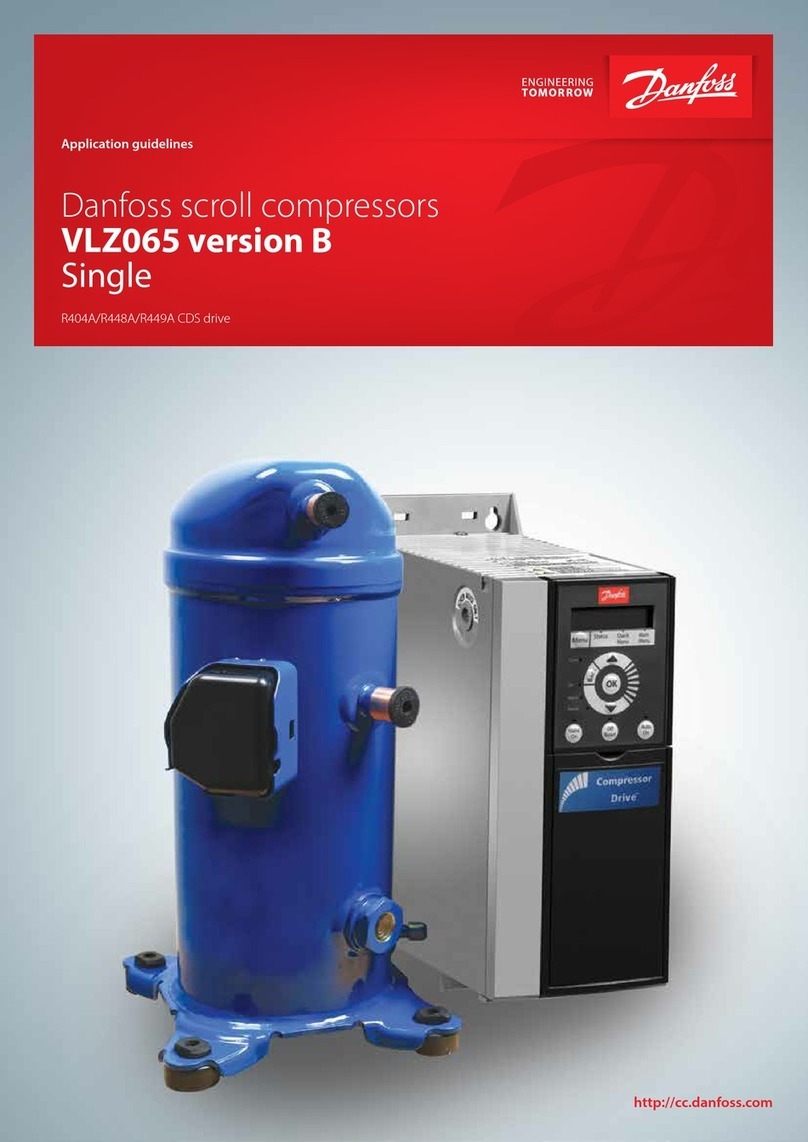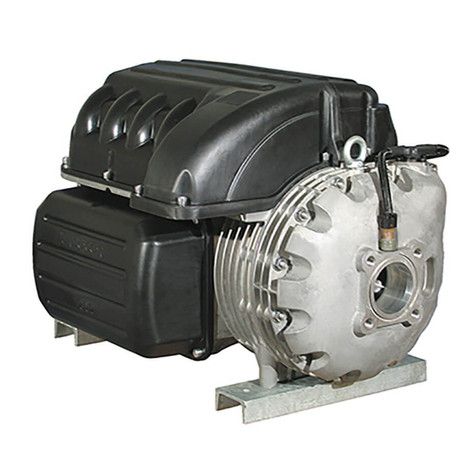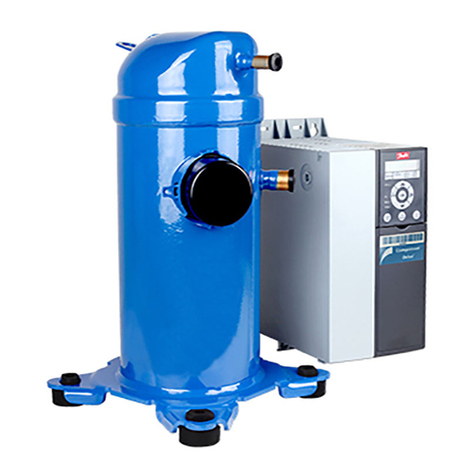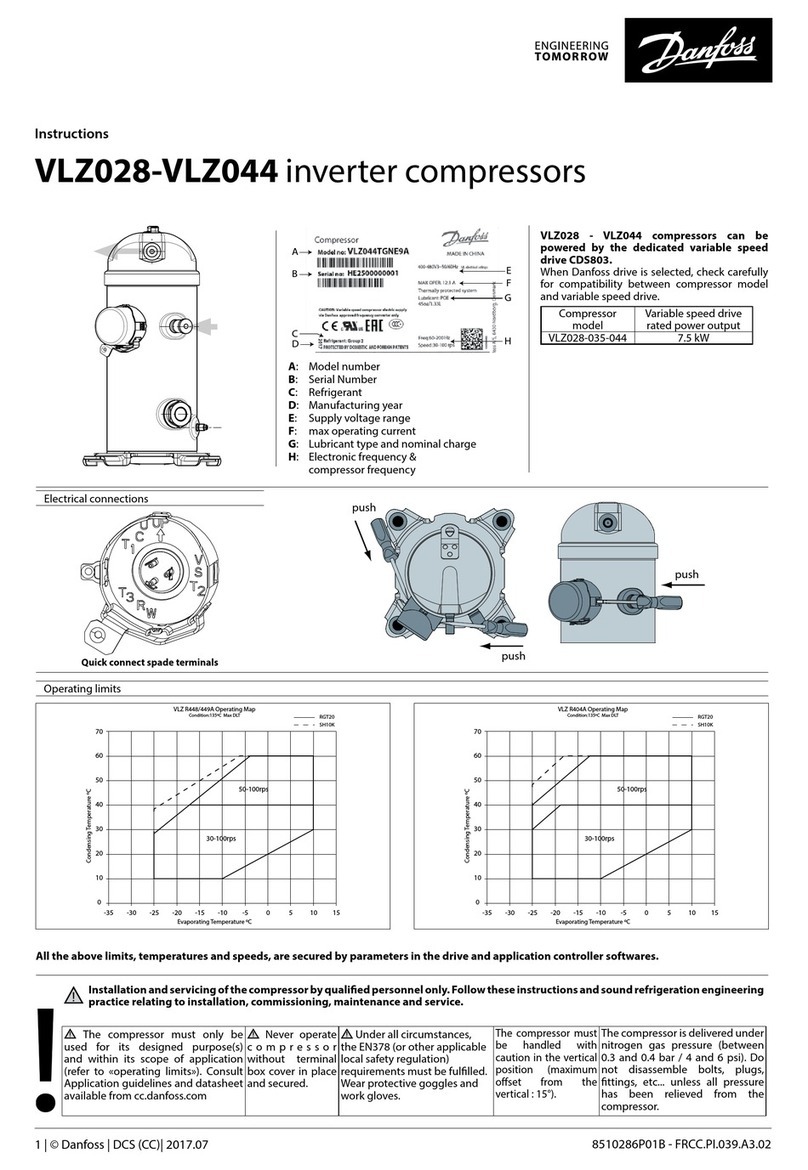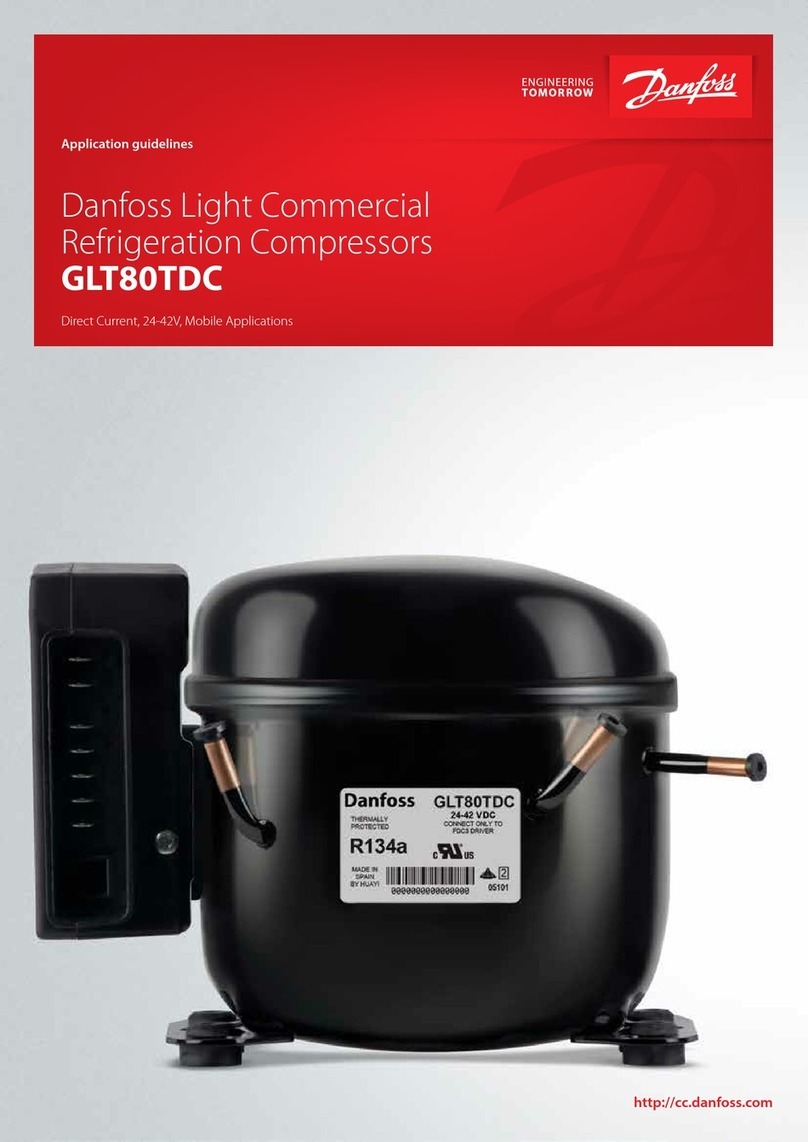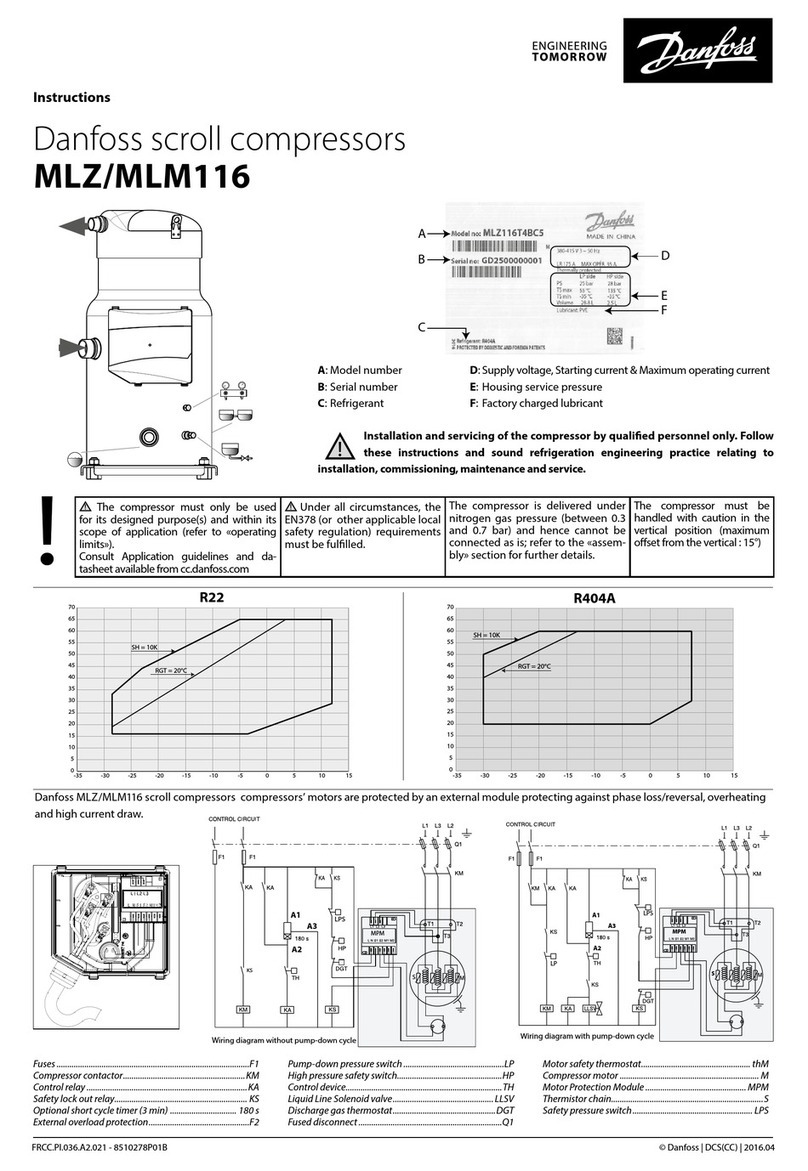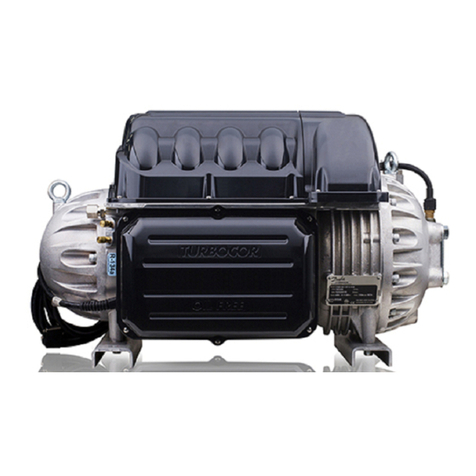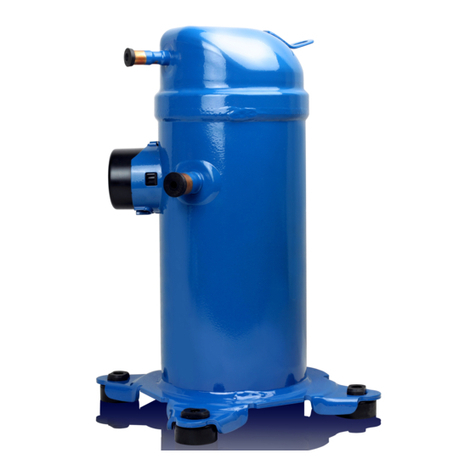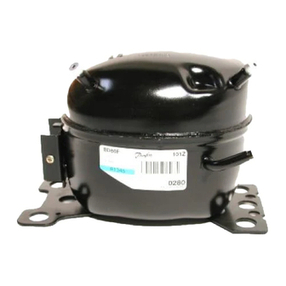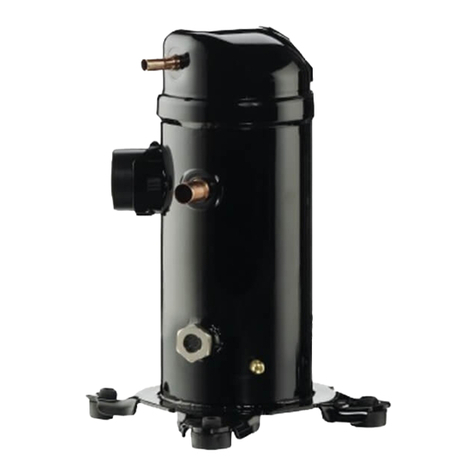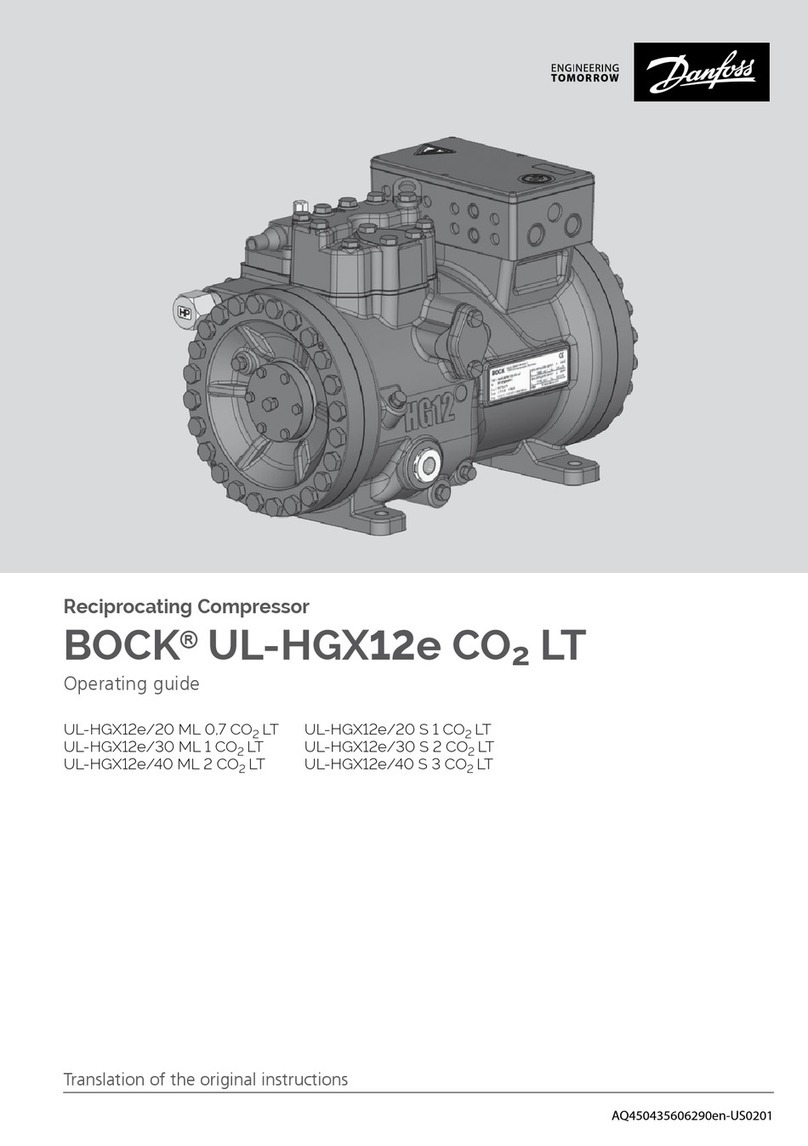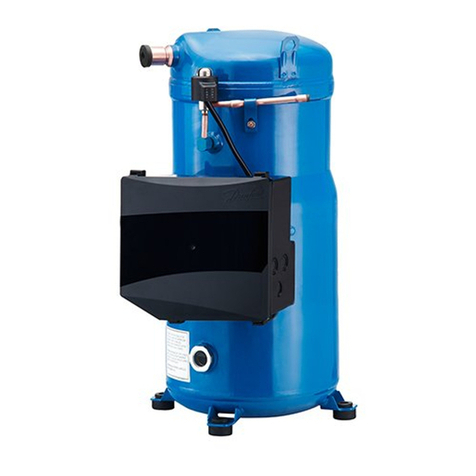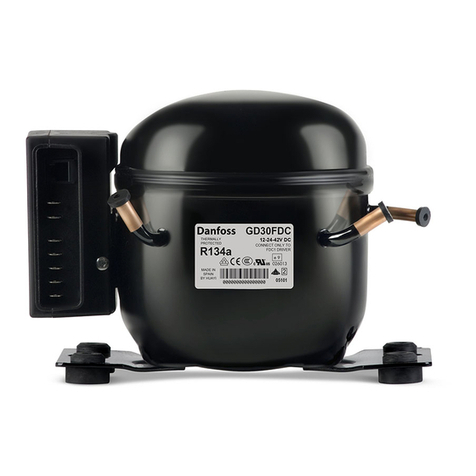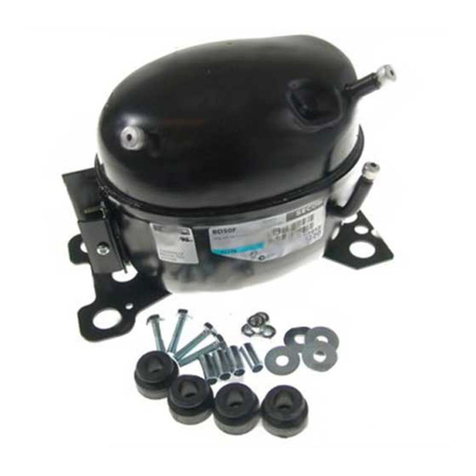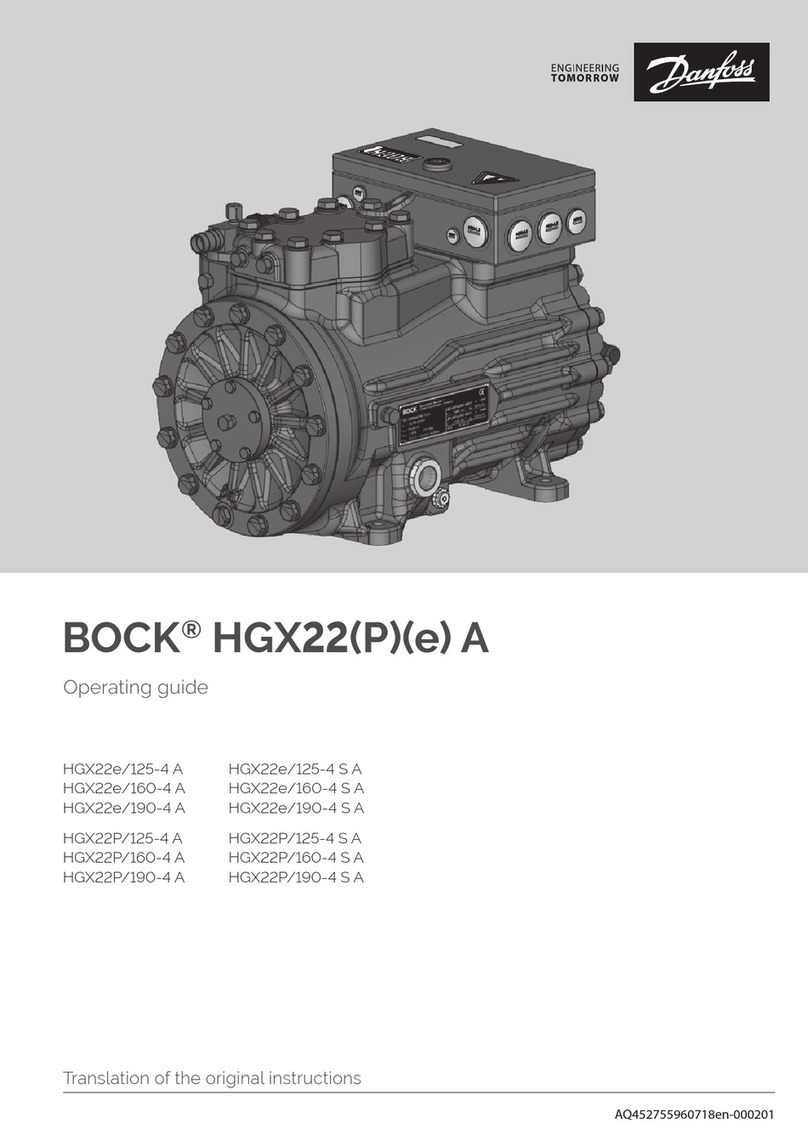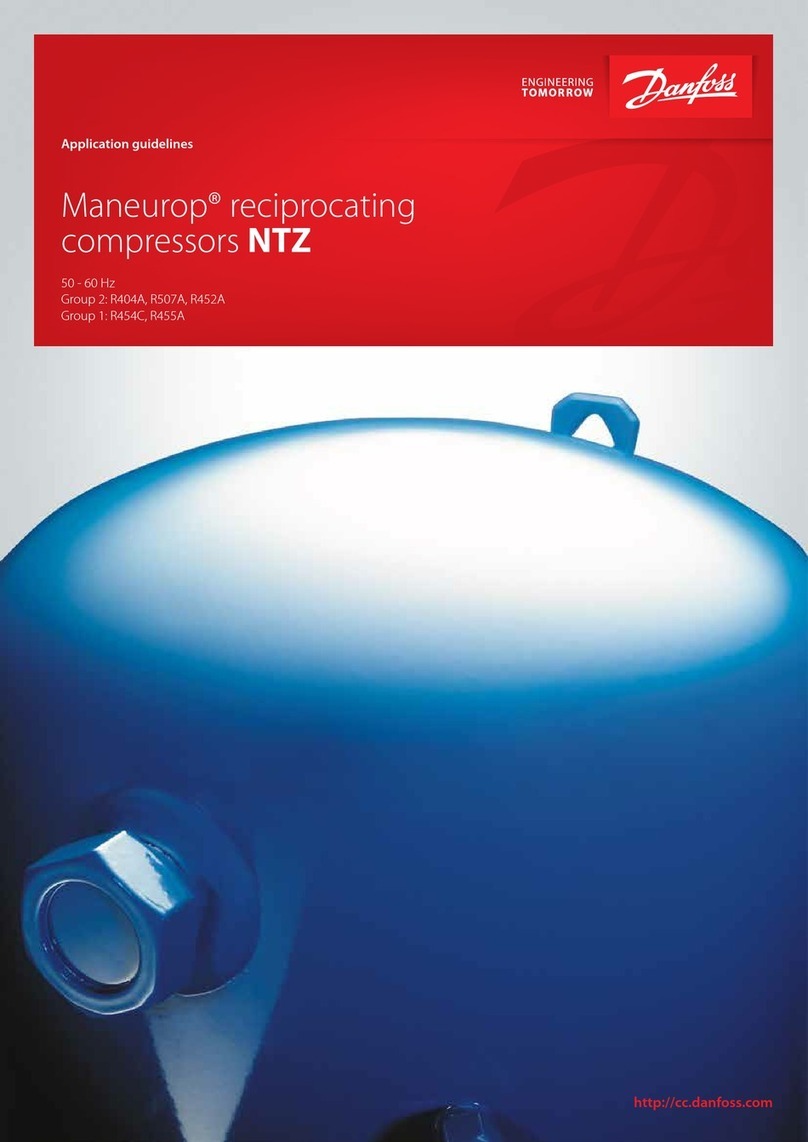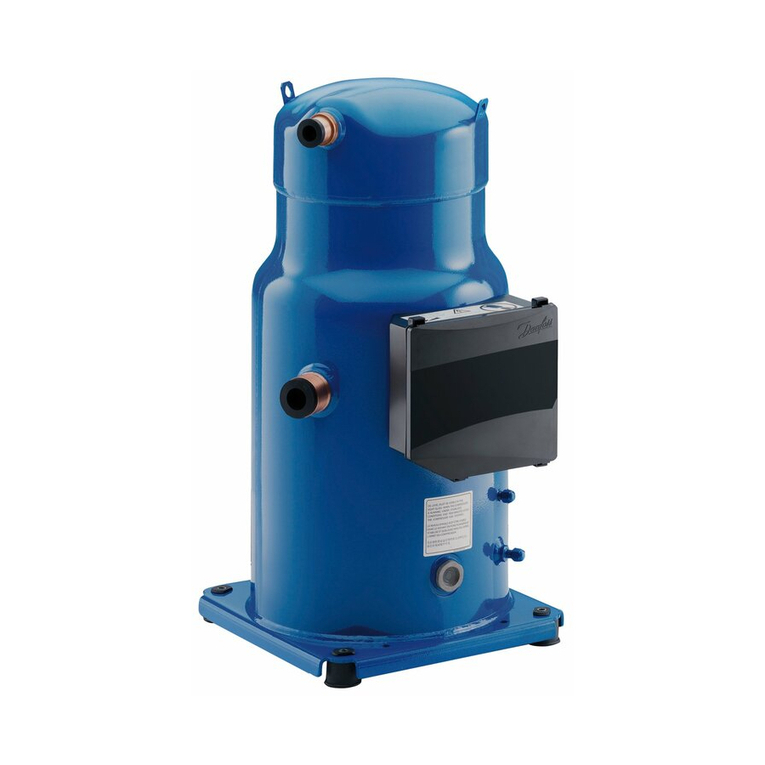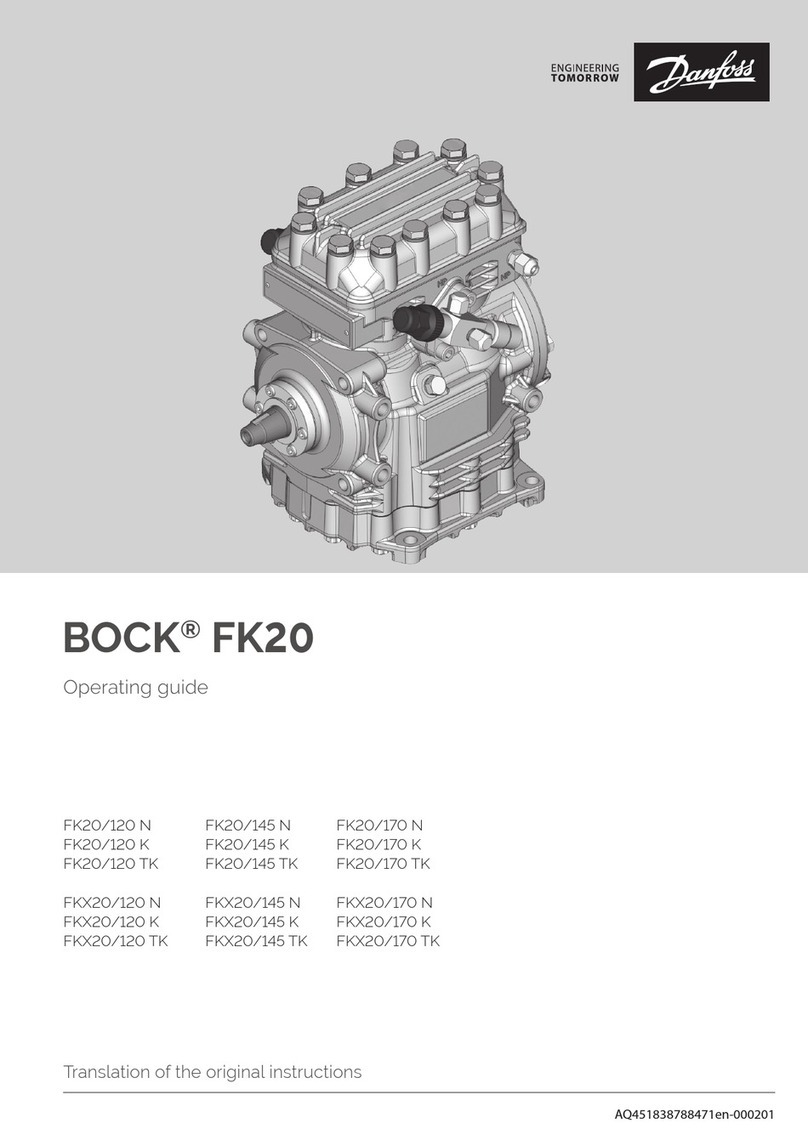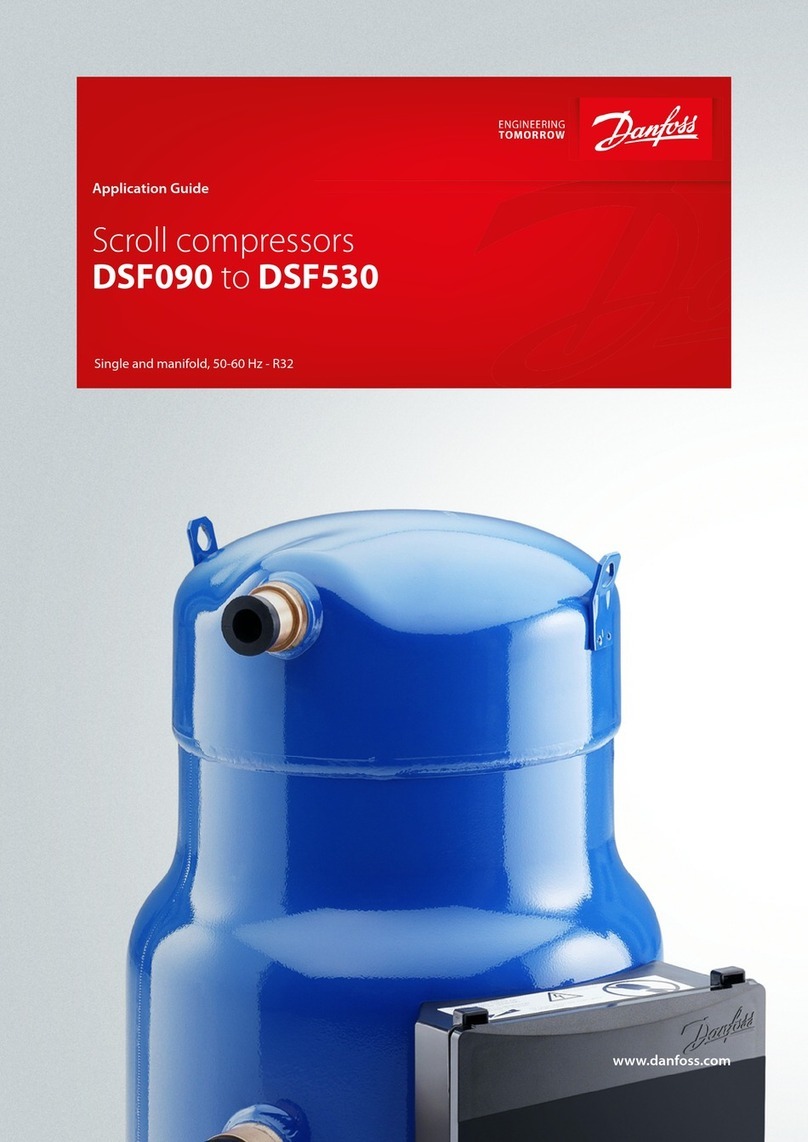
5
8510197P02-C © Danfoss Commercial Compressors May-2006
Instructions
an approved lubricant (refer to the“Introduction”
section of this manual).
•Anoilsightglasscompressormodelisrecommended
for split systems and remote condenser installations.
For all information necessary on adding oil to the
compressor, refer to TI bulletin 1-025.
•Make sure the refrigerant used to ll the system
is compatible with compressor design. Refer to
the “Introduction” section of this manual for an
approved list of refrigerants.
•Compressor switched o: The liquid refrigerant is
charged into the condenser and/or liquid receiver in
the liquid phase (compulsory for refrigerant blends).
The charge must be as close to the nominal system
charge aspossible inorder toavoidboth low pressure
operations and excessive superheating at start-up.
Throughout this operation, both compressor service
valves must remain closed.
•Remember that vapor-charging is only appropriate
for pure refrigerants, such as R22.
•To the extent possible, maintain the refrigerant char-
ge below the refrigerant charge limit for the compres-
sor model. Above this limit, install a system, such as a
pump-down cycle orsuction lineaccumulator, topre-
vent against liquid ood back into the compressor.
•Be sure that the refrigerant charge is suitable for
both winter and summer operations.
9 - Verification before commissioning
Ensure that all service valves are in the open po-
sition before start-up. A closed discharge or suction
service valve may cause serious damage to the com-
pressor and/or compromise safety device operation,
thereby resulting in potential injury to personnel.
•Checkthatallsafetydevicesareoperationalandpro-
perlyset(safetypressure switchset point,mechanical
relief valve if necessary, etc.). Make sure that these de-
vices comply with both generally - and locally - appli-
cable regulations and standards (e.g. EN378).
•When using high-pressure switches or relief
valves, the setting must not exceed maximum
service pressure of any system component. Refer
to the Application Guidelines for relevant com-
pressor pressure safety limits.
•A low-pressure switch is recommended to pre-
vent operation under vacuum. Use a minimum
setting of 1.5 bar (absolute).
•Verify that all electrical connections are properly fas-
tened and in compliance with local safety regulations.
•Whena crankcaseheaterisrequired(refertothe Ap-
plication Guidelines), ensure that it has been energi-
zed for a minimum of 12 hours before initial start-up
and/or during prolonged shutdown periods.
Exception: On SH compressors, for initial start
up, due to R410A specic behaviour it is not re-
commended to energize the crankcase heaters
in advance.
10 - Start up
Never start the compressor in the absence of a
refrigerant charge.
•Do not bypass the LP or any other safety switches
duringstart-up.Checkcurrentdraw and voltagelevels.
•Monitor the oil sight glass (when mounted) for 60
min. to ensure proper oil return to the compressor.
•Suction superheat setting: Optimal compressor
suction superheat would be around 10K, with the
maximum allowable superheat being 30K.
•Inall cases,the application limitsofthecompressor
mustberespected;moreover,highsuperheatvalues
lead to high discharge temperatures and decrease
compressor capacity. The maximum discharge tem-
perature is 135°C: operating at a higher temperature
may result in refrigerant decomposition.
•Under steady-state operating conditions, check re-
frigerant piping or capillary tubes for abnormal vibra-
tions(refrigerationlinemovementinexcessof1.5 mm
necessitates corrective actions, pipe brackets, etc.).
•After 2 to 4 hours of operations under esta-
blished conditions, check the oil level and add oil
if necessary (refer toTI bulletin 1-025). If oil return
continues to perform poorly, further investiga-
tion of the piping design is required.
•Ensure that refrigerant ow through the liquid
line sight glass (when mounted) is adequate and
that operating temperatures correspond with
system specications.
•When needed, refrigerant may be added in the
liquid phase, carefully throttling the refrigerant
on the low-pressure side and as far as possible
from the compressor. The compressor must be
operating during this process.
Do not overcharge the system.
11 - Troubleshooting
•Compressor failure to start: Verify that the
compressor is hooked up to the power supply;
check the power lead connections. If these veri-
cations reveal no abnormality, control the motor
windings with an ohmmeter.
Note: When the internal motor protector has trip-
ped out (SM/SZ 084 -090- 100 - 110 - 120 - 148
-161 and SH 090 - 120 - 161), it may take up to se-
veral hours to reset and restart the compressor.
•Compressor failure to build up pressure:
Check to make sure that all bypass valves in the
system have not been open. Also check that all
solenoid valves are in their proper position. For
SY/SZ 240-300-S380 models, if the internal pres-
sure relief valve is opened, the compressor sump
will be warm and the compressor will trip out on
the motor protector. If this happens, it may take
up to 2 or 3 hours to reset.
•Abnormal running noise: Ensure the absence of
any liquid ood-back to the compressor by means
of measuring the return gas superheat and com-
pressor sump temperature. The sump should be at
least 10K above the saturated suction temperature
under steady-state operating conditions.
•Thehigh-pressureswitchtripsout:Checkconden-
seroperations (condensercleanliness, fan operations,
water ow and water pressure valve, water lter, etc.).
If above check out OK, the problem may be due to
either refrigerant over charging or the presence of a
non-condensable (e.g. air) in the circuit.
•The low-pressure switch trips out: Check eva-
porator operations (coil cleanliness, fan operations,
water ow, water lter, etc.), liquid refrigerant ow
and pressure drops (solenoid valve, lter dryer, ex-
pansion valve, etc.), refrigerant charge.
•Low refrigerant charge: The correct refrige-
rant charge is given by the liquid sight glass in-
dication, the condenser delta T in relation to the
refrigerant pressure tables (pressure-tempera-
ture), the superheat and the sub-cooling, etc. (if
additional charge is deemed necessary, refer to
the “Filling the system” section).
•Compressor short cycling: The number of cy-
cles shall never exceed 12 starts per hour.
12 - Maintenance
•Performer® compressors do not necessitate any
special maintenance procedure. However, it must
be recalled that proper operations and mainte-
nance of the system serve to prevent against sys-
tem-related compressor problems. The following
preventive maintenance checks, to be performed
at regular intervals, are highly recommended:
•Control operating conditions (evaporating tem-
perature, condensing temperature, compressor
discharge temperature, temperature dierence
on heat exchangers, superheat, sub-cooling).
These conditions must always remain within
compressor operation limits.
• Verify that safety devices are operational and
properly set.
• Check the compressor oil level and quality; this
step may include an acid test, humidity check, spec-
trometer analysis, etc. whenever the oil becomes
discolored.
• Ensure that the circuit is leak tight.
• Verify the proper operation of heat exchangers
and, if necessary, clean them.
• Check the current draw on the compressor mo-
tor as well as proper voltage balance between pha-
ses.
• Check that all electrical connections are still ade-
quately fastened.
• Make sure the compressor is clean and in good
working order; verify the absence of rust on the
compressor shell, piping and electrical connections.
• Make sure the refrigerant charge is suitable for
both winter and summer operation.
•Ensure that periodic in-service inspections re-
quired by local regulations are performed.
13 - Replacement
Precaution must be taken when disconnec-
ting, cutting or drilling holes in the tubing to en-
sure that no refrigerant under pressure is present
in the system.
The refrigerant shall not be discharged directly
into the atmosphere; rather, it must be removed
using approved reclamation techniques and
equipment and then safely stored, in accordance
with applicable legislation.
Thepresenceofrefrigerantvaporcandisplaceairand
leadtosuocation.Properventilation ismandatory at
all times when servicing the equipment.
